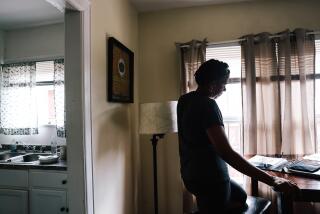How a bite of pizza led to an arrest in the Grim Sleeper serial killer case

Lonnie Franklin Jr., the alleged Grim Sleeper serial killer, listens to one of his attorneys, Louisa Pensanti, during a pretrial hearing on Aug. 17, 2015.
A serial killer known as the Grim Sleeper preyed on women in South Los Angeles for more than two decades, starting in the 1980s.
But it wasn’t until 2010 that police arrested a suspect in the case — and it came down, in many ways, to a bite of pizza.
Lonnie Franklin, 63, is charged with killing 10 women over a 22-year period. He has been held without bail since his arrest on July 7, 2010. He also is charged with the attempted killing of an 11th woman.
The former LAPD garage attendant and city garbage collector targeted vulnerable women, including prostitutes and drug addicts, prosecutors say. Seven of the killings occurred from 1985 to 1988, and the others from 2002 to 2007.
The tale of how the Grim Sleeper case progressed over the years is a story about science, cold-case investigating and the anguish of the victims’ families, who demanded justice.
The Homicide Report: A story for every victim >>
What was the breakthrough that led to Franklin’s arrest after so many years?
The Times in 2010 described the dramatic series of events this way:
With the help of federal drug agents, police watched Franklin around the clock, monitoring his every move.
For several years before the arrest, a group of detectives worked exclusively on identifying the Grim Sleeper killer, chasing lead after lead down dead ends. In 2010, they got a break: LAPD officials learned that a “familial search” of the DNA database by the California Department of Justice had come up with a convicted felon whose genetic blueprint indicated he was a close relative of the suspect.
A suspect soon became clear: the felon’s father, Franklin, a mechanic.
Detectives began following Franklin.
Franklin traveled to northern Orange County, near Buena Park, where he stopped for pizza. At the end of his meal, he threw away a pizza crust, a fork, napkins and a drinking glass. Detectives moved in.
DNA tests on the leftovers from the meal came back. Franklin’s genetic profile matched that of the Grim Sleeper. Roughly two hours later, Franklin was arrested at his South L.A. home.
How did the court view this evidence?
In 2014, a judge agreed to allow the pizza evidence in court, ruling it was obtained legally.
What did Franklin’s attorneys say?
They argued in pretrial hearings that the officers cleared Franklin’s plates and utensils before he was finished and the tableware and food was therefore taken illegally. The attorneys also argued that Franklin had a reasonable expectation that his plates would be thrown into the pile with others, which would make it impossible for police to definitively prove which remnants belonged to him.
Los Angeles County Superior Court Judge Kathleen Kennedy rejected the defense’s argument as “specious and ridiculous.”
ALSO
Grim Sleeper victims: Who they were
Victim of Boyle Heights hit-and-run was National Guardsman, college student
Father of bride vanishes at wedding reception in Northern California
More to Read
Start your day right
Sign up for Essential California for news, features and recommendations from the L.A. Times and beyond in your inbox six days a week.
You may occasionally receive promotional content from the Los Angeles Times.






